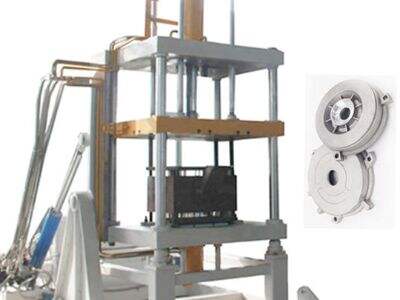We at Boqiao always want to provide the best quality products to our customers. For this reason, we prefer to employ gravity casting machines to manufacture intricate and complex metal components. In this article we will be discussing the different reasons why gravity casting machines is the most superior method for manufacturing these type of parts.
How Gravity Casting Works
This level of accuracy makes gravity casting machines a preferred choice to produce metal parts than other methods. Gravity casting is simply the process where we fill a mold with melted metal using gravity. Unlike with other methods that apply some pressure to force the metal into the mold. This requires gravity to get the metal flowing into the mold as needed. This natural flow also allows us to produce parts with an extreme amount of detail and precision. It means each little fragment of the design can be made perfectly.
Our Advanced Machines
We have specialized gravity casting machines at Boqiao that are very precise and uniform. These machines come with intelligent management architectures to ensure the smooth transfer of molten metal into the die. These types of additively-manufactured parts maintain all the original part details. Using our technology, we can ensure all manufactured parts are identical and properly toleranced. It is crucial for us to maintain this consistency while manufacturing parts for our clients.
Consistent Quality
Reputation is key and is especially relevant when we are fabricating detailed metal components as we should be getting the same quality every time. Gravity casting machines work really well, as the metal flows naturally into the mold. That ensures that every part we manufacture is the same high quality. Our customers can always rely on their products being produced to the same high standard every time. At Boqiao we pride ourselves on the uniform quality of our metal parts.
Efficiency in Production
Rapid manufacturing of lots of intricate metal components is crucial to our operation. Gravity casting machines in this particular aspect are ideal as they perform the function efficiently. Our machines enable us to manufacture numerous parts simultaneously without compromising any quality. This is good for our customers' needs, and when they need large quantities of parts. Our Gravity casting machines are optimised for efficiency, enabling us to meet demand without sacrificing care and precision in part manufacturing.
Cost-Effective Solutions
The price of creating complex metal parts can be high at times. Gravity casting machines, however, help control those costs. These casting methods consume lower energy and process costs versus other casting processes. Therefore, gravity casting is an excellent, cost-effective high quality part production process. Boqiao knows that our customers have a budget, so we aim to provide value without compromising quality. One way we achieve this balance is by utilizing gravity casting machines.
Strong Metal Parts
Metal parts we make for critical applications need to be well-behaved and robust. Gravity casting is a fantastic process for producing strong metal components that lend themselves well to these critical applications. Our gravity casted parts are strong yet lightweight. That superb combination means they are perfect for use in critical applications requiring strength. Boqiao specializes in manufacturing neeed-metal parts of parts and components of durable auto parts.
Conclusion
Boqiao dedicates to the manufacture of high quality metal parts tailored to our customers. Our gravity casting machines ensure that our products are precise, uniform, economical, and robust enough for any critical application. Get a quote now!If you have any need of precision and quality metal parts, please contact Boqiao today! And also Explain how our Gravity Casting Machines can meet your needs and give you the right results!



 AR
AR
 BG
BG
 HR
HR
 CS
CS
 FR
FR
 DE
DE
 EL
EL
 HI
HI
 JA
JA
 KO
KO
 PL
PL
 PT
PT
 RO
RO
 RU
RU
 ES
ES
 CA
CA
 TL
TL
 IW
IW
 ID
ID
 LV
LV
 SR
SR
 SK
SK
 SL
SL
 UK
UK
 VI
VI
 SQ
SQ
 ET
ET
 GL
GL
 HU
HU
 TH
TH
 TR
TR
 FA
FA
 AF
AF
 MS
MS
 SW
SW
 BN
BN
 LO
LO
 MN
MN
 MY
MY



